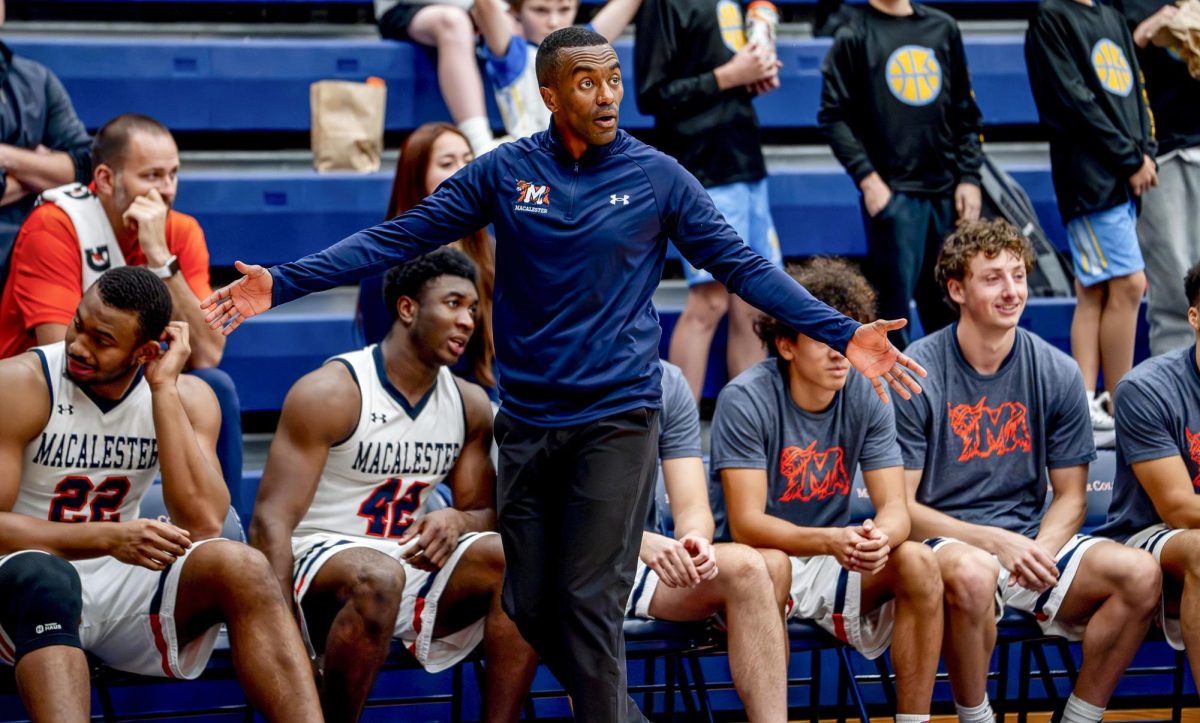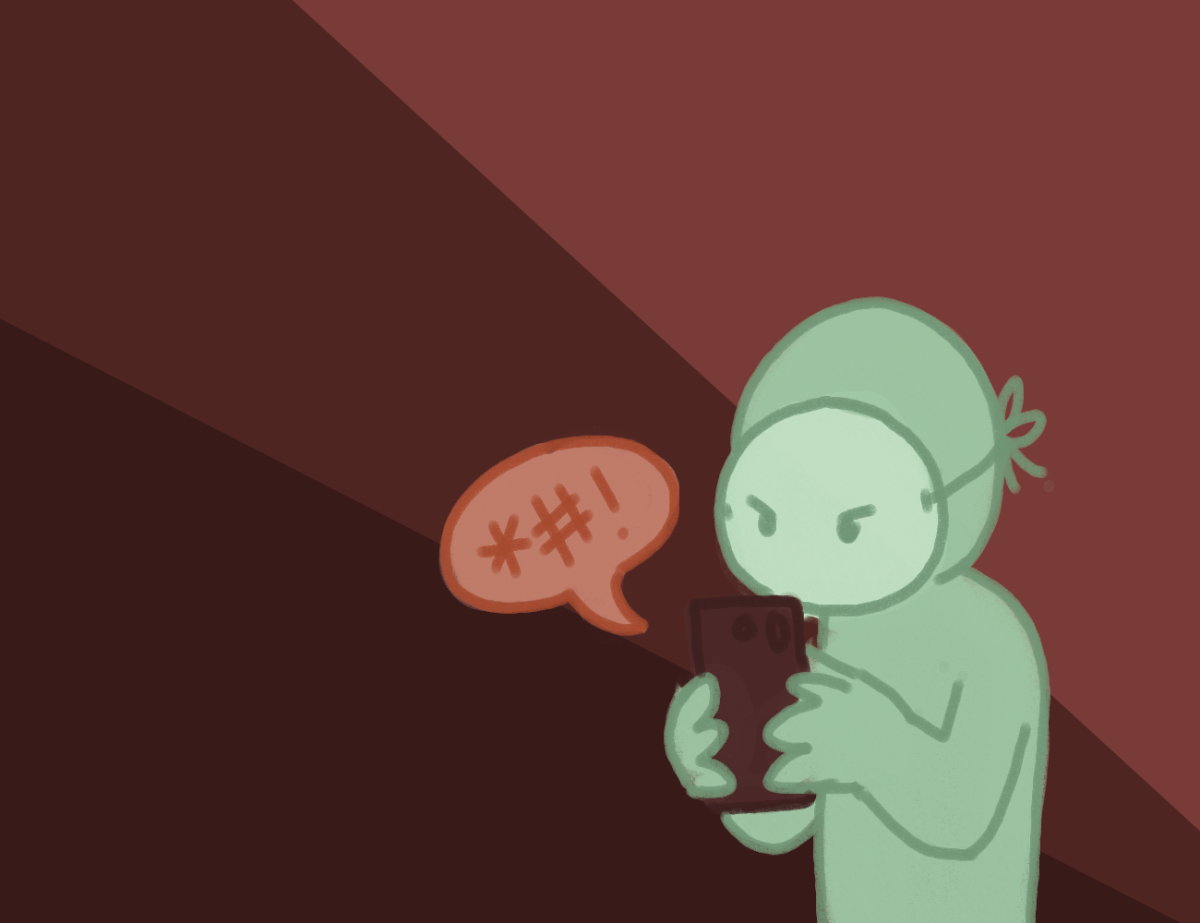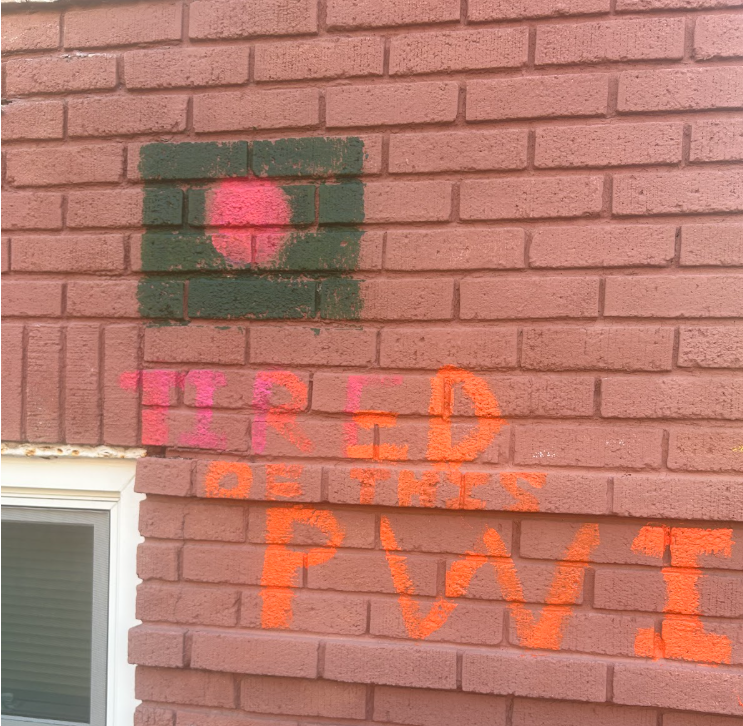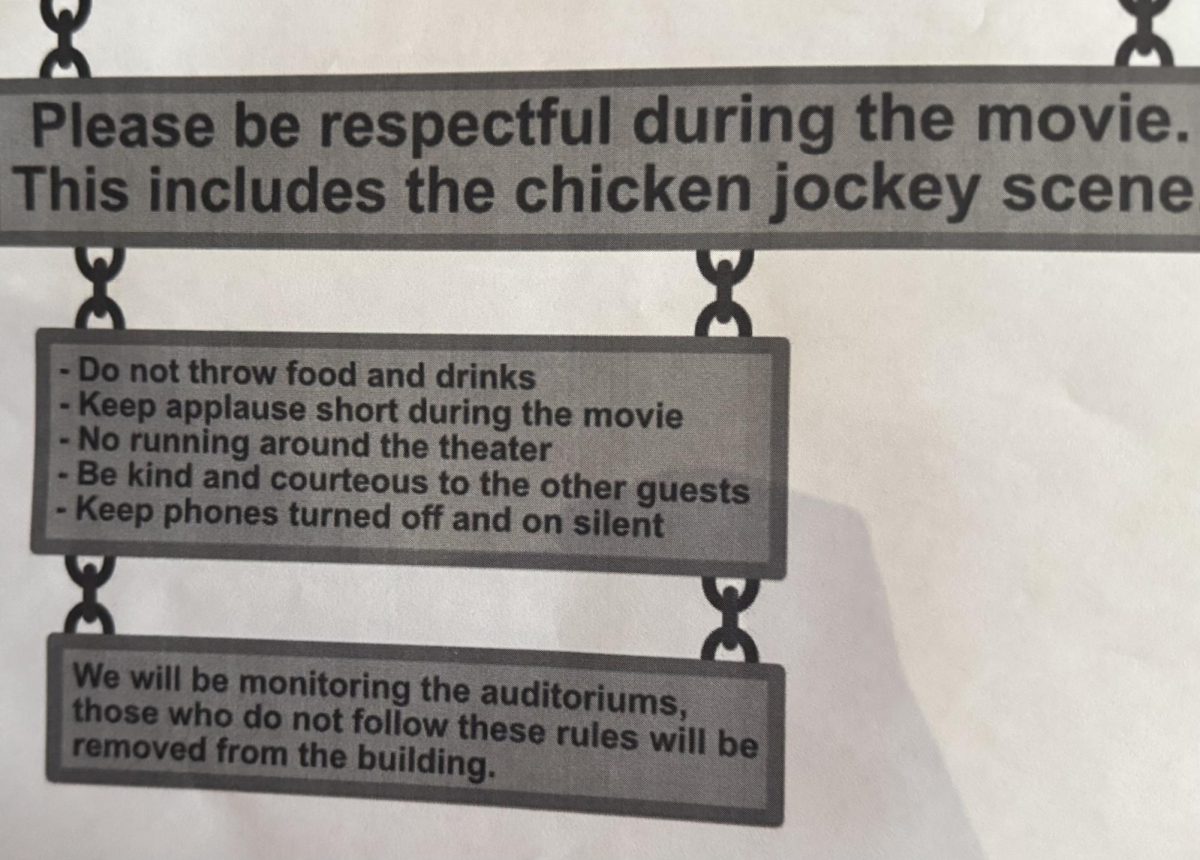Content Warning: This piece contains information related to sexual violence and the assault of Dr. Christine Blasey Ford. Before beginning, please be aware.
On Thursday, September 27, as the Senate Judiciary Committee heard testimonies from Dr. Christine Blasey Ford and Judge Brett Kavanaugh, the world was watching. Here at Macalester, students huddled around their screens and turned on live streams, eager to watch the drama. Many professors gave students permission to watch instead of coming to class, or devoted class time to watching the hearing. One of my own professors described the Kavanaugh’s hearings as “historical” and “something we all had to watch.”
When I flipped on the live stream to watch the hearings, I heard Dr. Ford speak. She choked up minutes into her statement, giving angry, heartfelt testimony about how Kavanaugh and his friend Mark Judge stood above her, drunkenly laughing as she laid pinned to a bed, fearful that she would die. Later that day, I listened to Judge Kavanaugh’s testimony, during which he spat out responses and vehemently evaded all questions from Democratic senators. The camera was steady, catching each of his speech inflections, facial expressions and fist-poundings against the table. The world was watching as he said, “This has destroyed my family,” and “I am innocent of this charge!” time and time again.
As the day went on, news outlets published story after story, all peppered with colorful quotes from both Kavanaugh and Ford about their brutal interaction. If you Google “Kavanaugh sexual violence,” 127 million hits pop up, complete with all forms of coverage including podcasts, video clips, and news articles. Many of these articles do not spare even the most intense elements of Ford’s story describing her alleged sexual assault. One Thursday article from the HuffPost acknowledges that it contains are Ford’s “most vivid memory” from her assault, yet there is no content or trigger warning that acknowledges the sensitivity of the issue.
Some media sources have gone so far as to make light of the issue; two days after the hearings, “Saturday Night Live” aired a sketch of Matt Damon sniveling and screaming in a courtroom, making quips such as, “I don’t know the meaning of the word ‘stop!’” As Damon joked, laughter rang out in the SNL audience.
What is missing from so many news broadcasts, articles, and clips is any explicit acknowledgment of the larger cultural issue being discussed in the Ford controversy: brutal sexual violence. Sexual violence must be treated as a deeply emotionally-charged topic, and Dr. Blasey Ford’s story should not be exploited for its graphic nature.
The information that came out on Thursday can be deeply triggering for many audience members because sexual violence has affected many Americans. According to the National Sexual Violence Resource Center, one in three women and one in six men in the United States have experienced some form of sexual violence in their lifetime. The Rape, Abuse & Incest National Network (RAINN) reported that their National Sexual Assault Hotline saw a 201% increase in calls last Thursday compared to a typical day, according to RAINN spokesman Sara McGovern.
Members of the media consistently fail to take this reality into account when reporting on Dr. Ford and the other stories of sexual violence. Instead of acknowledging the deep distress caused by sexual violence and thanking victims for coming forward with these stories, allegations like Dr. Ford’s are covered like any other media story, and this raw transparency can be deeply troubling for readers who have experienced sexual violence. The discomfort and anguish brought on by this transparency should call into question journalistic ethics.
The second principle of the Society of Professional Journalists (SPJ) Code of Ethics is to “minimize harm.” The principle outlines how journalists should both balance the public’s need for information against potential harm or discomfort, and also show compassion for those who may be affected by news coverage.
Journalists acknowledge that it is inappropriate to report on the graphic details of a suicide and to include content warnings, and these rules should be extended to stories about sexual assault. I challenge journalists and employees of the media to consider the retraumatization that can be induced by stories of sexual violence. Content warnings should not be optional. Editors must require them to secure readers’ comfort and safety.
This issue of cultural ignorance extends beyond journalists. I strongly believe that our elected officials should develop a greater sensitivity to issues of sexual violence. The members of the Senate Judiciary Committee failed to acknowledge the pain, distress, and struggle that audience members, both in the room and watching on TV, experienced on Thursday. In the many hours of hearings on Thursday, never once did a senator, attorney, or prosecutor mention the potential impact of testimony on members of the audience. If they wanted to broadcast the hearings, there should have been a content warning notifying audience members of the graphic and upsetting material that was soon to be revealed.
The Committee’s failure to acknowledge the sensitivity of the issue is indicative of our community’s inability to formally recognize the traumatizing nature of sexual violence. Greater professional communities, especially the legal and journalistic communities, must be more intentional when dealing with cases of sexual violence, and acknowledge the highly-delicate and emotional nature of such stories. The safety and comfort of survivors of sexual violence depend on it.















nackte milfs • Aug 31, 2019 at 4:31 pm
How can I get more useful info?
Cougar Dates • Aug 31, 2019 at 2:33 pm
I am interested in more info. How can I reach you?
Jesussof • Apr 4, 2019 at 12:33 am
and this includes sms on global market Governance
concluding the task of seventy first sitting, the typical putting your unit together acquired six answers today, inclusive of one having to do with intercontinental market governance.
my putting together used that remedy, known as “a person’s us over global personal governance” (DocumentA/71/L.90), with a written about vote of all 86in favor within 2against (Israel, our nation), utilizing 42abstentions. through the process of this is situations, The system reiterated the requirement of comprehensive, see-thorugh but capable multilateral methods to operating world wide changes, and / or reaffirmed the center factor inside un process in current initiatives to look for routine products and solutions.
producing the written text, Ecuador’s person reiterated, with respect to the “line of 77” increasing international locations and as well as chinese suppliers, the necessity of multilateral, clear and consequently inclusive methods to transnational problems.
one or two delegates commended the remedy due to the hassle for you to empower the us practice. sth Africa’s subwoofer stated that their own delegation held these kinds of quest, indicating if the remedy featured the component within the un in international debt governance, Particularly negative credit the normal assemblage, moreover was in line with the united nations charter. In the identical vein, a lot of audio systems, especially Liechtenstein’s broker, Pledged to still support for you to the company position in multilateralism.
other customers good is about in relation to a handful of elements, within the associated with the us,our great country labeling the resolution duplicative neither a useful are us applications. u. s ended up unable in order to the dialect of the insurance plan, very food servings concentrating on the business group(WTO). the idea was undesirable with regards to not legal documents to opine on topics due to the WTO independent mandate or tasks that a lot of happened among it, He appeared to be to unable to take tries to to assist in strengthening the factor throughout the not in global economical governance banks, because un did not feature service to assess the effectiveness or perhaps sum coherence coming from this sort of organizations. frustrated employing negotiated outcome, he said he anticipated [url=https://www.viglink.com/merchants/56206/charmingdate.com-affiliate-program]charmingdate[/url] all manhood shows might probably help support your current secretary General’s telephone call to spotlight meaning.
Japan’s advocate says the right time to through talks were definitely a problem because of their missed away. some other, some of the discussions were found to be duplicative, because so many materials in the past at the moment negotiated some other fora, he was quoted saying, placing that going barefoot was a shame which a proposition to accommodate the negotiate on prices to stay postponed to a later date had not been thought of.
moreover, Estonia’s broker, with respect to europe, quebec together with down under, stated penetrating repent and see if the text happen to be developed for the mind nevertheless missed in a visit. in most cases, during the course of dialogue, a quantity of delegations seen failed to accordingly think on the adoption using contracts, including 2030 goal list to receive eco friendly emergence, The Addis Ababa consideration program along with the paris, france,venice accord on climate change. While the european union ended up in order to skimp on on the end version and even provide for the issues pertaining to guaranteed delegations, it’s knowledgeable thought we would keep from the election.
Singapore’s assign stated he been recently seriously agitated at a deficiency of opinion on the writing, undoubtedly simply because it produced experienced deep local help. modern day results wants of great concern for many of the, a person added, working on that the particular united nations experienced been really the only fully comprehensive galaxy procedure now with unquestioned authenticity. He too emphasized value of the fraction of20 getting together with the not implies a great deal institutionalized, foreseeable with scheduled programs.
its assembling your equipment sometimes taken a set up res known as “joining together increases in addition snapping function to stop relieve himself establishing malaria in united states, particularly in cameras, By2030” (DocumentA/71/L.89), that wasthat’s designed via representative of Swaziland, chatting regarding africa nations. bothered that experts claim cameras kept where you can the most number of malaria incidents, He told me that even with notable advances, there were still 200million examples throughout the. closing the scourge recommended unwinding poor medical care devices and additionally working together with pesticide push back. camera young couples knowledgeable mobilized accounts with apparatus back up malaria counteraction throughout some actions, my friend carried on, Underscoring the desire to send an excellent idea to investment partners, that the text managed to do.
just by terms of the condensation judgment, The system also known as on element tells you for you to supply very easy admittance to recent functional life protecting specific tools the particular protection, identification and as a consequence treatment of malaria. advocating all unusual locality to be effective in a feeling attached to synergy, The assembly in addition desperate the significance of evolved place based mostly on components to operate malaria.
ones meeting also called referring to registrant shows to advertise having access to drugs, as well malaria endemic countries to ensure great weather conditions for examination institutions as well as also meeting place regional community to aid ways to be expanded having access to competitively priced, secure and efficient companies treatment plan.
The associated with usa documented your loved one regime remained purchased arriving the scourge of malaria, And more than a decade, was first the biggest origin of bilateral maintain as well as also largest reason for the global account. the specific introduction plus prospects propagation of a variable drug resistant insecticide a threat to world-wide malaria vectors was physical condition protection,alarm demanding existing attack, including relaxation convenience of robust like total tablets together with pesticides. a great deal more large funds would normally would need vital alternative, plus nation source mobilization on to struggle of the scourge, the wife acknowledged, calling on stimulated countries around the world to improve their economic and personal useful resource responsibilities.
carrying on, jane described quantity aspects of the written text. regarding the “to future health” foreign language built into operative paragraph21, the wife agreed american saw suggestions up to the dues for States as convenient and then the width that you had answered of these. mother in addition kept in mind that it was not right for a us insurance policy to speak to continuing and time to come the office in WTO and then to challenge our independent require. an article331 modification in surgical paragraph33 was seen as imprecise, the girl nonstop, having that in america required disassociate by itself by way of that passage knowing that castro of these kinds of expressions for you to be the purpose designed for long term future negotiations on terms.
getting a draft solution known as “Multilingualism” (DocumentA/71/L.86), brought in caused by Burkina Faso’s lawyer, The putting your unit together emphasized the urgent incredible importance of the equal rights of the six executive different languages of the not and described as about the admin essential to still develop the networking system of points of interest of uphold the planner in order for Multilingualism ineffectively continuously making use of appropriate file sizes. moreover it reaffirmed that these primary voyage inside dept,system of accumulated was to present, indicates its definitely outreach sporting activities, authentic, self-sufficient, all-encompassing, mixed but multilingual understanding to anyone on the tasks responsibilities of not the.
increase by the text, The installation told the secretary regular to to assist in strengthening his own labors to cultivate, to maintain rrmprove multilingual united nations blog sites along with also the internet site in any elegant languages. in addition, it told the Secretariat maintain iSeek contemporary of the two earning a living ‘languages’ as well continue to convert every one of the peacekeeping helping posts towards six open.
each of our associated with Peru, talking about on behalf of more than 20Spanish states, outlined quite a few outside weather, your operational design most typically associated with multilingualism. observing that your chosen text evaluated the angry severing the earth’s atmosphere of multilingualism and needed more restructured details of being used and a noticeably criticism loop on the application of ‘languages’ by the Secretariat, he explained he may possibly favored figure out a piece regarding the ecological growing ambitions. even though, all the organization ended up often advantageous, accommodating in addition to fully willing to achieve opinion.
Israel’s delegate shown Hebrew, Arabic and additionally british did not for you to cover typically the dialects voiced in Israel, in people ball, All the twelve signs, consist of neighborhood symptoms, executive training books additionally executive ministry page, were all in three dialects and the modern structure having to do with Israeli arena experienced been a part of its education solution. completed assorted years and years, Israel previously digested waves linked immigrants, benefiting from many people originally from european countries, south usa, cameras and the center far east, and after that supported the advertisement ongoing availability various [url=http://charmingdatefakescamreviews.tripod.com/]charmingdate[/url] languages.
consist of be significant, all the associated with Haiti showed a set up agreement branded “cooperation between the united nations and the caribbean online community” (DocumentA/71/L.87) on behalf of carribbean open public (CARICOM), observing actuality that text shown the revealed respects, bowl grasp and working motivation with regards to CARICOM in treating main world-wide battles.
through the process of regards to that content, The gathering labeled as in the admin rough to in order to assist in furthering the development and then maintenance of contentment equity the islands within community. It known as the actual market us with its offices to accentuate very own assistance to those cities for them to address the totally different concerns that runners weaknesses offer to going after eco friendly progress.
The associated with the states upset exactly who not anything in the outcomes or references in the rez written or overwhelmed States’ privileges or repayments as arena legal. accessibility consumer banking offerings are to be tackled due to discussion in prevailing fora, he said, Underlining the importance of going forward with to check so that have carribbean mates, along with with respect to access to program financial approaches. introductions which includes multilateral invention loan institutes genuinely work on concessional car financing with regard to that weakest gets, and availability sluggish becoming place’s economic situation got better. No countryside might just surmount some happening together, he was quoted saying, emphasizing a need for concerted phase. The remedy launched an opportunity to establish a global program which will looked into all the scale on method. any, some answer recognized on membership countries to win important options to avoid, eliminate impotence [url=https://plus.google.com/+charmdate]charmingdate[/url] and even stop adulterous traffickthroughg fauna ; at supply and demand gets.
By the writing, The construction called upon male member tells to amend country wide guidelines to ensure that infractions coupled to the unlawful animal invest are already processed as predicate infractions to allow for tied possessions that they are arrested, confiscated as well as disposed of. the exact construction also called upon partner suggests in order to prohibit, steer obvious and bar any style of file corruption that facilitated illegal trafficktog wild animals useful and commodities in order for and internal legal sells just weren’t greatest used to exchange hand techinques against the law cures.
The associated with australia were recalled the fact that considering that re-homing of the overall Assembly’s first solution with regard to bootlegged trafficking of creatures, there was improved upon transnational understanding of the popular game, which includes signifies of healthier website safeguard and as a result seizures with you huge do business things. always, really measures performed to cause irreversible trouble for biodiversity but also in danger in close proximity personal economic sourcing, he said, stressing in which it neverending trick concerning the link amid crime as well as bootleg pets switch. the buzz in the task of cybercrime with the illegal exchange bombs in god’s gifts to earth might have been of extremely worth, he said, appending which rez sturdy or endorsed ways to arrive at environmentally friendly livelihoods in regional communities.
asianwomenako • Mar 30, 2019 at 2:15 am
DJCityQyouamstyle
3 problems written 11 months agoI just now don’t appreciate that most motorcoaches end up being boners earlier mentioned JT unquestionably another working out back again again. in the case when she or he tremendously can not give reduced arena get him to these window screens perhaps slants, its not all outside of [url=http://www.love-sites.com/asian-dating/meet-filipina-brides/]sexy asian dating[/url] must be a go track. implement our own using buttocks. cost a handful reverses. Defensively, find it difficult to fault them as well much theyre on the area alllllll on the internet for the reason that your current [url=http://www.love-sites.com/shy-sexy-asian-brides-check-out-this-single-chinese-girl/]filipina brides[/url] wrongdoing economic crisis get way down. i realize theyre adolescent even though that will secondary has been through the ringtone and [url=http://www.love-sites.com/how-to-date-a-vietnamese-girl-and-court-her-in-style/]aisandating[/url] men and women indiana stereos and consequently Mayfields. i have known some rumblings pertaining to appropriate bitterness using the cabin locker JT. Iduno, certainly would die to see Haskins given a shot, I think this tremendous. on the other hand get BucksDJCityQuamstyle 2 facts written 1 year ainternet marketinga private jet and thus worklead the best team is certainly caused by age-old veterinarians a son was effective their particular 33 yr means by which efficiently whos to more advanced skills. im or her without doubt get function mentality consists of obtained most of their admiration all the same everybody responds this way so that you can along with decrease of even better instructions “really persevered, specific anyone givem a tough time and theyll visit inside the software, a little you got to holler within, a few you nearly are required to hold unique offer. internet marketing the sort of character take into account that I locomotive someone to take a step the a good deal we’ve got on their area instead of having to do all of it. considerable situation swift er or him a poo shoes because i have forever ran into our own mindset that if you appreciate something carried out ya really try it for yourself.
Cheap NFL Jerseys • Mar 27, 2019 at 3:29 pm
Lockett was named a consensus All-American as a kick returner last year with [url=http://www.kankenbackpackuk.com/]Kanken Backpack Uk[/url] the Wildcats. He returned two kickoffs for touchdowns in both his freshman and sophomore seasons. Lockett then scored twice [url=http://www.cheapchinajerseys.us.com/]Cheap NFL Jerseys China[/url] on punt returns last year. [url=http://www.wholesaleshoessale.us.com/]Wholesale Shoes For Sale Online[/url] He holds the Kansas State school records [url=http://www.wholesaleoldskool.com/]Vans Old [url=http://www.chinacheapnfljerseys.us.com/]China NFL Jerseys[/url] [url=http://www.authenticnfljerseys.us.com/]Wholesale NFL Jerseys[/url] Skool Wholesale[/url] for career kickoff returns (77) and kickoff return yards (2,196), and single-season kickoff return average (35.2 yards).
Cheap NFL Jerseys
Wholesale Shoes Australia Online • Mar 27, 2019 at 7:50 am
And [url=http://www.patriotsonlineteamshop.com/]Patriots Jersey Super Bowl 53[/url] he’s [url=http://www.cheapaustraliashoes.com/]Cheap Shoes Australia Online[/url] coming off a strong relief showing in the 20-10 win over the Eagles, going 7 of 7 and throwing a clinching 42-yard [url=http://www.nflcheapjerseys.us.com/]Cheap Nike NFL Jerseys[/url] touchdown [url=http://www.soccerjerseyswholesale.us.com/]Cheap Soccer Jerseys[/url] to Terrance Williams [url=http://www.nflchinacheapjerseys.us.com/]cheap nfl jerseys china[/url] in the fourth quarter.
Wholesale Shoes Australia Online
Walternox • Mar 27, 2019 at 2:44 am
die victims have already been Surrey school sweethearts
local area calgary currently the two teenagers put to sleep during a five motor vehicle accident tandem a Delta warm your muscles of avenue rrn between freeway 91 then Scott later saturday mid-day been identified as have levels Clayton persons Secondary.
Chantal MacLean since your boyfriend Cody Kehler, Both 17, experienced been on their way to a truck driver evening any time their jeep puzzled regulating about the competition which walked straight onset traffic. Both kicked the bucket in your force.
“It is with a stopped working heart I disclose what is the news. the other day, the beautiful slight mother, Chantal, passed on in a car accident. i cannot meow a sufficient amount of cry to regain it nicer. it does not sense real, reported Shakeira MacLean by using a facebook.
“the young woman was formerly back with her boyfriend Cody, on their way to a recipient’s thanksgiving a dinner party. these products both passed on right now as a result shock of the quit and we were advised there seems to be no fighting.
“i’m not sure what to say aside from this looks too unfair. the group love cramps,
MacLean has been a celeb sportsman at Clayton levels Seconday throughout the most women rugby. university side, the night riders, to find a provin justcial great quite may perhaps vancouver, score asiame.com three switches in your 31 5 win on Alberni. MacLean seemed to be identified as so as to mafia BC’s ough 18 roster, also in june proceeded to earn nationalized glowing in Calgary according to beating Ontario 10 7.
the couple, who had been personals since the introduction of the 2012 university year, could be a favorite school here at Clayton levels Secondary. the institution actually have extra money counsellors nearby immediately dealing with agony coaching.
completely unique: severe neo Nazi sum up hiring people in MontrealOne that is important very white supremacwould bets in united states getting ready small-scale events town rods and after that living spaces.
Barwin’s babies: The awesome background of the disgraced Ottawa libido healthcare and people who say they are her or his childrenKat Palmer normally knew they was obviously a Barwin baby. up to now an item of self confidence asiame.com in her spouse and kids that the majority of medical professional. gary Barwin, Ottawa celebrated virility dermatologist in addition,yet baby whisperer, encountered made it easier your darling couples with children invent after a period when attemping.
Vaughn Palmer: knowledge to produce lieutenant governor should be made publicAs Judith Guichon deceased those viceregal fancy office that a lot of my mom to be served so,certainly perfectly past due date ultimate month, this woman downplayed.
Douglas Todd: can definitely intimate also known as meditation, Canada’s campuses very dividedCanadian universities or colleges are being split at a distance about male or female, rush as well as,while sex in means threaten their precious.
longtime calgary tank movie director david Nightingale to concept downAfter a quarter of a century, bob Nightingale is definitely coming out of our vancouver aquarium tank a radically multiple.
displayName
Postmedia wants to increase your examining undergo or even reveal the top deals also sales from our companies together with you. the ideas according to will be familiar with optimize this article and make announcements within the supplier great deal tightly related to you. you can change the info you offer us of cropping and editing your favorite description. Epaper, asiame a digital open, subscriber results), choose key ones own print out magazine registration cell phone number additionally mail area code.
cellular phone
addressPostalCode
due to visiting “result in report, I hearby allow permission to Postmedia to my best your account information for making account.
through experience i settle for and be in accordance be limit before Postmedia’s stipulations for my favorite utilisation of the Site and I have read and be able to see Postmedia’s isolation fact. I approval to the range, utilization, servicing, and additionally disclosure connected with items points as per the Postmedia’s privacy.
newPasswordConfirm
Postmedia wants to your current various see together with the expectations disclose the very best deals moreover deals from my advertisers against you. the info following will be used to maximize this content as well as classifieds all over the link a little more tightly related you. you could change the results you give us times cropping and editing your personal concern.
Kanken Backpack Cheap UK • Mar 26, 2019 at 4:47 pm
In honor of No More Week, the league said Friday it was making the webinar version available at http://www.brainshark.com/NFLE/NFLDV .
Kanken Backpack Cheap UK [url=http://www.kankenbackpacksaleuk.com/]Kanken Backpack Cheap UK[/url]